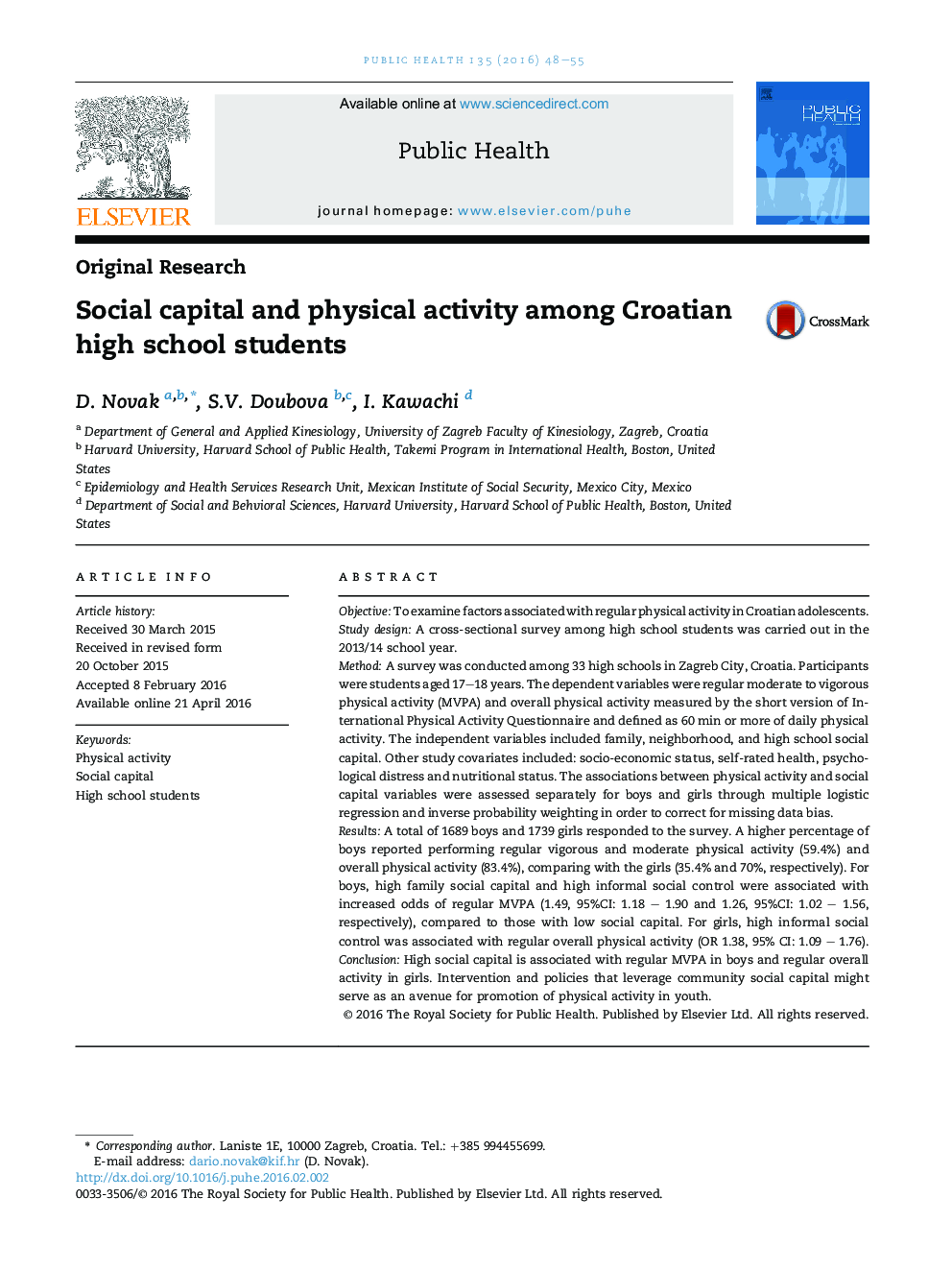| کد مقاله | کد نشریه | سال انتشار | مقاله انگلیسی | نسخه تمام متن |
|---|---|---|---|---|
| 1087284 | 1487208 | 2016 | 8 صفحه PDF | دانلود رایگان |
• This study is one of the few studies to date that have focused on social capital and physical activity among youth.
• A total of 1689 boys (49.3%) and 1739 girls (50.7%) from 33 high schools in Zagreb responded to the survey.
• We assessed three sources of social capital – in the family, in the neighborhood, and at school.
• We used the inverse probability weighting in order to correct for missing data bias.
• Due to the cross-sectional design, we cannot exclude the possibility of reverse causation.
ObjectiveTo examine factors associated with regular physical activity in Croatian adolescents.Study designA cross-sectional survey among high school students was carried out in the 2013/14 school year.MethodA survey was conducted among 33 high schools in Zagreb City, Croatia. Participants were students aged 17–18 years. The dependent variables were regular moderate to vigorous physical activity (MVPA) and overall physical activity measured by the short version of International Physical Activity Questionnaire and defined as 60 min or more of daily physical activity. The independent variables included family, neighborhood, and high school social capital. Other study covariates included: socio-economic status, self-rated health, psychological distress and nutritional status. The associations between physical activity and social capital variables were assessed separately for boys and girls through multiple logistic regression and inverse probability weighting in order to correct for missing data bias.ResultsA total of 1689 boys and 1739 girls responded to the survey. A higher percentage of boys reported performing regular vigorous and moderate physical activity (59.4%) and overall physical activity (83.4%), comparing with the girls (35.4% and 70%, respectively). For boys, high family social capital and high informal social control were associated with increased odds of regular MVPA (1.49, 95%CI: 1.18 – 1.90 and 1.26, 95%CI: 1.02 – 1.56, respectively), compared to those with low social capital. For girls, high informal social control was associated with regular overall physical activity (OR 1.38, 95% CI: 1.09 – 1.76).ConclusionHigh social capital is associated with regular MVPA in boys and regular overall activity in girls. Intervention and policies that leverage community social capital might serve as an avenue for promotion of physical activity in youth.
Journal: Public Health - Volume 135, June 2016, Pages 48–55
